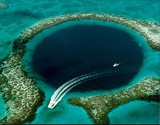
Students will investigate the processes and changes in climate that lead to sinkholes.
- Subject:
- Ecology
- Environmental Science
- Oceanography
- Physical Geography
- Material Type:
- Lesson Plan
- Author:
- Lora Gibbons
- Date Added:
- 03/26/2019

Students will investigate the processes and changes in climate that lead to sinkholes.
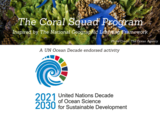
Environmental Education: Coral Ecosystems
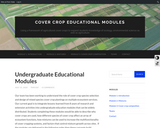
Active learning modules to help students understand the role of cover crop species selection and design of mixed species cover crop plantings on multiple ecosystem services. Our current goal is to integrate lessons-learned from 8 years of research and extension activities into undergraduate education modules that can be widely distributed. Students completing these modules would be able to describe why cover crops are used, how different species of cover crop affect an array of ecosystem functions, how mixtures can be used to increase the multifunctionality of cover cropping systems, and factors that control mixture growth across sites. If the modules are delivered in the following order then these concepts build sequentially.
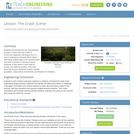
In this lesson, students find their location on a map using Latitude and Longitudinal coordinates. They determine where they should go to be rescued and how best to get there.
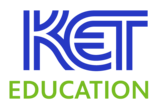
As an English/digital media teacher at Henry Clay High School in Lexington, Kentucky, Jason Behler has found that his students become deeply engaged when creating their own podcasts, especially because he allows them great freedom in selecting their own genre and content. His students develop skills in collaboration and time management as well as technical and communication skills. Podcasting does not need to be confined to a class in digital media, and it does not require expensive equipment. Podcasting can be integrated into any content area to add spark to your lessons.
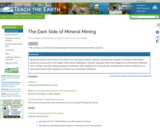
Students choose one of four short articles to read about mineral mining, including the impacts of mining on the Native American community in the region. Each article highlights a specific example where the Indigenous community's interests are in conflict with the mining company's interests. After reading one of the articles, students post a short reflection to a discussion board, then respond to at least one classmate's reflection.
(Note: this resource was added to OER Commons as part of a batch upload of over 2,200 records. If you notice an issue with the quality of the metadata, please let us know by using the 'report' button and we will flag it for consideration.)
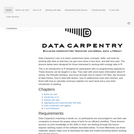
Data Carpentry lesson from Ecology curriculum to learn how to analyse and visualise ecological data in R. Data Carpentry’s aim is to teach researchers basic concepts, skills, and tools for working with data so that they can get more done in less time, and with less pain. The lessons below were designed for those interested in working with ecology data in R. This is an introduction to R designed for participants with no programming experience. These lessons can be taught in a day (~ 6 hours). They start with some basic information about R syntax, the RStudio interface, and move through how to import CSV files, the structure of data frames, how to deal with factors, how to add/remove rows and columns, how to calculate summary statistics from a data frame, and a brief introduction to plotting. The last lesson demonstrates how to work with databases directly from R.

Background Scientific research in the 21st century is more data intensive and collaborative than in the past. It is important to study the data practices of researchers – data accessibility, discovery, re-use, preservation and, particularly, data sharing. Data sharing is a valuable part of the scientific method allowing for verification of results and extending research from prior results. Methodology/Principal Findings A total of 1329 scientists participated in this survey exploring current data sharing practices and perceptions of the barriers and enablers of data sharing. Scientists do not make their data electronically available to others for various reasons, including insufficient time and lack of funding. Most respondents are satisfied with their current processes for the initial and short-term parts of the data or research lifecycle (collecting their research data; searching for, describing or cataloging, analyzing, and short-term storage of their data) but are not satisfied with long-term data preservation. Many organizations do not provide support to their researchers for data management both in the short- and long-term. If certain conditions are met (such as formal citation and sharing reprints) respondents agree they are willing to share their data. There are also significant differences and approaches in data management practices based on primary funding agency, subject discipline, age, work focus, and world region. Conclusions/Significance Barriers to effective data sharing and preservation are deeply rooted in the practices and culture of the research process as well as the researchers themselves. New mandates for data management plans from NSF and other federal agencies and world-wide attention to the need to share and preserve data could lead to changes. Large scale programs, such as the NSF-sponsored DataNET (including projects like DataONE) will both bring attention and resources to the issue and make it easier for scientists to apply sound data management principles.
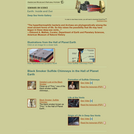
This online gallery of photos, illustrations, and videos provides a snapshot of deep sea vents and the ancient forms of life that can be found within them. Transcripts of the videos are provided, and the photos and illustrations are accompanied by explanatory texts.
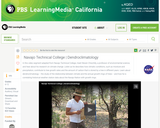
In this video segment adapted from Navajo Technical College, meet a dendroclimatologist who studies the relationship between precipitation and tree growth in the Navajo Nation.
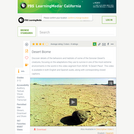
This video segment from NOVA: A Desert Place describes the physical characteristics and organisms that define the desert biome.
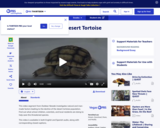
This video segment from Outdoor Nevada examines threats to the desert tortoise population.
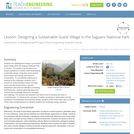
Students are challenged to design a permanent guest village within the Saguaro National Park in Arizona. The design must provide a true desert experience to visitors while emphasizing sustainable design, protection of the natural environment, and energy and resource conservation. To successfully address and respond to this challenge, students must acquire an understanding of desert ecology, environmental limiting factors, species adaptations and resource utilization. Following theintroduction, students generate ideas and consider the knowledge required to complete the challenge. The lectures and activities that follow serve to develop this level of comprehension. To introduce the concepts of healthy ecosystems, biomimetics and the importance of sustainable environmental design, students watch three video clips of experts. These clips provide direction for student research and challenge design solutions.
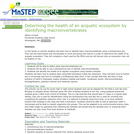
This lab activity allows students to indetify macroinvertebrates and determine the health of an acquatic ecosystem.
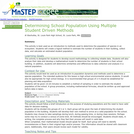
This activity is an introduction to population sampling techniques. Students' will identify weaknesses and strengths of a variety of techniques and determine the best applications of the various methods identified.
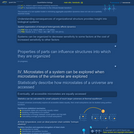
In this deterministic cellular automata model, interactions between neighboring automata are described using a prisoner's dilemma. Limiting dispersal of seeds of annual plants can permit heterogeneous co-existence, whereas thorough mixing instead allows one subpopulation to dominate quickly.
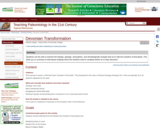
To complete this assignement student have to work in groups to answer a series of questions on the evolution of land plants. They need to combine material previously covered in lecture and information from the WWW to determine how the evolution of land plants changed the lithosphere, atmophere, and biosphere.
After completing the attached exercise the students participate in a guided discussion. There are several way to divide students up into groups.
Different groups are asked to summarize: the link between the spread of land plants and
1) atmospheric carbon levels and climatic conditions,
2) organic carbon and dissolved oxygen levels in the ocean
3) the abundance of corals and other marine animals: shallow vs. deep ocean
4) Erosion rates on land and rates of organic matter burial in the oceans.
5) General patterns in diversity and biomass of marine and terrestrial fauna
Then each group is asked to discuss how the aspect they considered about the Devonian Extinction fits into and differs from conditions we see in the modern carbon cycle.
(Note: this resource was added to OER Commons as part of a batch upload of over 2,200 records. If you notice an issue with the quality of the metadata, please let us know by using the 'report' button and we will flag it for consideration.)

Diatom. Compound light microscope 100XImage by Fernando Agudelo-Silva.

This video segment from Greater Boston examines whether environmental toxins may be to blame for a rare skin disease.